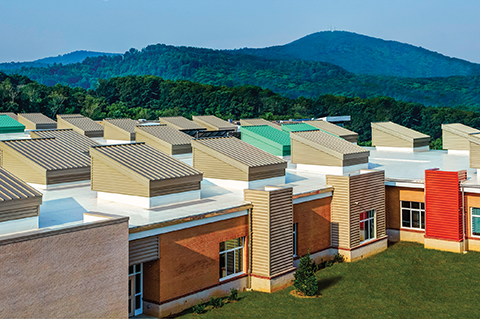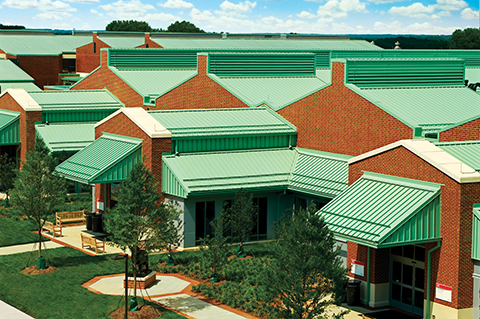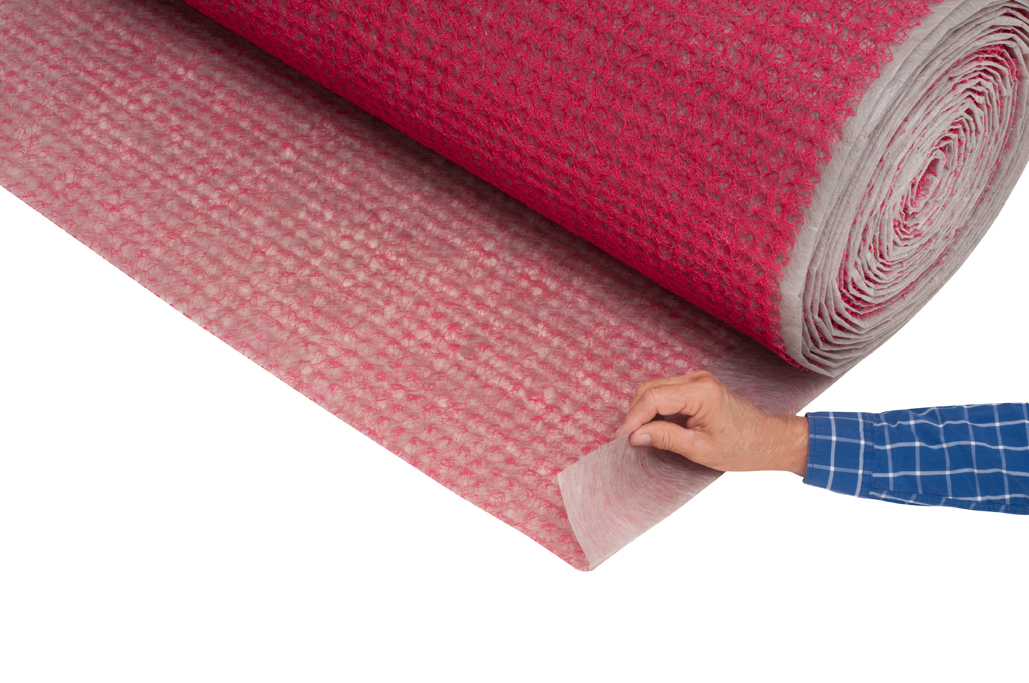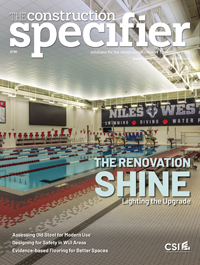The benefits of metal roofs and coatings

In addition to ASTM test protocols and coating manufacturers’ specifications, standards and guidelines are available from industry associations, government agencies, and various metal roofing manufacturers to inform decision-makers about their coating selections and how exterior coatings should be expected to perform when exposed to various climate conditions over time.
When testing how a coating’s color changes based on its exposure, samples are cast on a pre-coated primer. Color instrumentation is then used to measure the color of a batch of paint versus the standard, in three scales:
- light to dark (or white to black);
- red to green; and
- yellow to blue.
Any color coating can be scored by a number based on where it falls on each of these scales.
Many coating manufacturers’ warranties cite Delta E on their paint, which refers to the change in the color from when it dried to its current length of exposure. Delta E quantifies the difference between two colors, such as the unexposed reference and the color after exposure. A Delta E of 1.0 is typically the smallest color difference the human eye can see. The combination of sun, heat, and moisture affects the color shift in Delta E and damages the roof’s coating far more quickly than any one factor alone.
Environmental considerations
The primary environmental concern with liquid coil coatings is the solvents used. Some of these solvents are considered volatile organic compounds (VOCs), which have been associated with ozone depletion when released directly into the atmosphere. When coil coatings are applied by responsible finishing facilities, the VOCs are safely captured and incinerated before the painted material leaves the factory. In some cases, the heat from incineration is then re-used to heat different parts of the coating process.
The coating selection for metal roofs can also have positive environmental advantages. Until recently, the roof has been one of the least energy-efficient components of the building envelope. Seeing the opportunity for innovation, options such as ‘cool’ metal roofs have come to the forefront of commercial building design.
A cool roof is one reflecting the heat emitted by the sun back into the atmosphere, keeping the roof’s temperature lower, thereby reducing the amount of heat transferred into the building space below. Cool roof requirements appear in national and local energy codes, green building initiatives, and energy rebate programs because a cool roof reduces air-conditioning use and lowers utility bills. It also mitigates the urban heat island effect, where roof and pavement surfaces retain heat, which in turn, contributes to elevating temperatures, increased greenhouse gas (GHG) emissions, and local climate disruptions. Cool roofs minimize these adverse effects, while increasing occupant comfort and reducing the occurrence of health issues associated with poor air quality and smog.

There are two key properties important to the temperature a roof will reach in direct sunlight:
- solar reflectance (SR)—the amount of solar energy immediately reflected from a surface; and
- thermal emittance (TE)—the amount of heat energy a surface can re-emit in the form of infrared (IR) energy into the atmosphere.
A cool roof with a high SR and a high TE will have a lower surface temperature compared to that of a roof with a low SR and a low TE. A lower surface temperature translates into less heat gain into the structure below, resulting in a cooler building, which means less energy used and lower energy bills.
Research by the Oak Ridge National Laboratory’s (ORNL) Buildings Technology Center shows metal roofing retains SR better over time than any other roofing product. Enhancing this performance, coil coatings for SR metal roof are available with 70 percent PVDF resins and solar reflective pigments. Depending on color, many cool roof applications will specify a two-coat, factory-applied, oven-baked finish with a minimum SR value of 0.25 and TE value of 0.85 to 0.90 for typical coatings.
Energy not reflected away or re-emitted can heat a roof’s surface, whereby the flow of ambient air causes convection heating, potentially contributing to higher urban temperatures. A heat island describes built-up urban areas that are hotter than their surrounding rural areas. According to the U.S. Environmental Protection Agency (EPA), the annual mean air temperature of a city with one million people or more can be 1 to 3 C (1.8 to 5.4 F) warmer than its surroundings. In the evening, the difference can be as high as 12 C (22 F). The elevated temperatures can result in higher energy costs to cool buildings for the entire city.



